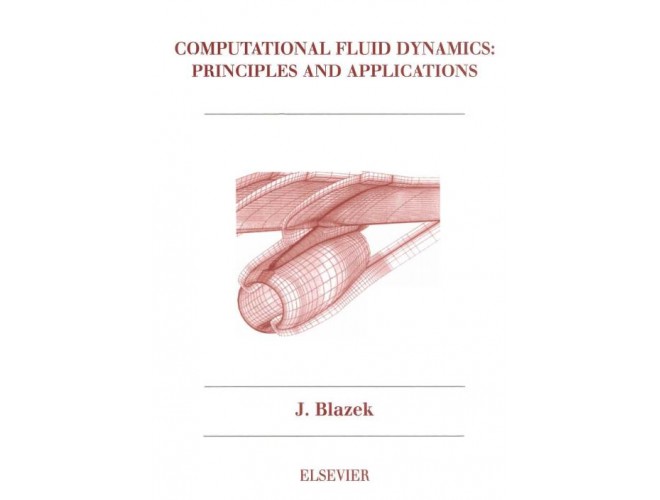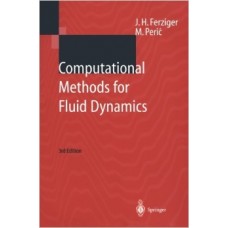The history of Computational Fluid Dynamics, or CFD for short , started in the early 1970’s. Around that time, it became an acronym for a combination of physics, numerical mathematics, and, to some extent, computer sciences employed to simulate fluid flows. The beginning of CFD was triggered by the availability of increasingly more powerful mainframes and the advances in CFD are still tightly coupled to the evolution of computer technology. Among the first applications of the CFD methods was the simulation of transonic flows based on the solution of the non-linear potential equation. With the beginning of the 1980’s, the solution of first two-dimensional (2-D) and later also three-dimensional (3-D) Euler equations became feasible. Thanks to the rapidly increasing speed of supercomputers and due to the development of a variety of numerical acceleration techniques like multigrid, it was possible to compute inviscid flows past complete aircraft configurations or inside of turbomachines. With the mid 1980’s, the focus started to shift to the significantly more demanding simulation of viscous flows governed by the Navier-Stokes equations. Together with this, a variety of turbulence models evolved with different degree of numerical complexity and accuracy. The leading edge in turbulence modelling is represented by the Direct Numerical Simulation (DNS) and the Large Eddy Simulation (LES). However, both approaches are still far away from being usable in engineering applications
معرفی کتاب
دینامیک سیالات محاسباتی : مبانی و کاربردها – ویرایش دوم
تاریخچه دینامیک سیالات محاسباتی (CFD) به اوایل دوره هفتاد باز میگردد. در همان دوران بود که این علم که ترکیبی از فیزیک، ریاضیات محاسباتی و تا حدی علوم کامپیوتر بود، برای شبیهسازی جریان سیال مورد استفاده قرار گرفت. امکان استفاده از ابررایانههای قدرتمند به نوعی نقطه شروع CFD در این حوزه بوده و پیشرفتهای آن همچنان در رابطه تنگاتنگی با تکامل کامپیوترها میباشد. از میان اولین کاربردهای تکنیکهایCFD شبیهسازی جریانهای گذرصوت بر اساس حل معادله پتانسیل غیر خطی بود و درآغاز دهه 80، حل اولین معادلات اویلر دوبعدی (2D) و پس از آن، سه بعدی (3D) امکانپذیر شد. به لطف پیشرفت تصاعدی سرعت ابررایانهها و توسعه انواع روشهای عددی سریع مانند مولتیگرید، امکان محاسبه جریانات غیر لزج در وسایل نقلیه هوایی و یا داخل موتورهای توربو نیز فراهم آمد. در اواسط دهه هشتاد، تمرکز به طور گسترده ای به سمت شبیهسازی های موردنیاز جریانهای ویسکوز که معادلات ناویه استوکس برآنان حاکم میباشد، معطوف شد. علاوه بر این، انواع مدلهای تلاطم با درجههای مختلف پیچیدگی و دقت عددی، نیز تکامل یافتند. روشهای پیشرو در مدلسازی جریانهای آشفته عبارتند از شبیهسازی عددی مستقیم (DNS) و شبیه سازی گردابههای بزرگ(LES) ، که هر دو هنوز هم قابلیت استفاده درکاربردهای مهندسی را ندارند.
| کتاب | |
| حوزه تخصصی کتاب | سیالات |
| تعداد فصل های کتاب | 12 |
| زبان کتاب | ENGLISH |
| مشخصات کلی | |
| تعداد صفحات | 470 |
| تعداد صفحات محصول | بیش از 200 |
Lorem ipsum dolor sit amet, consectetur adipiscing elit. Aliquam iaculis egestas laoreet. Etiam faucibus massa sed risus lacinia in vulputate dolor imperdiet. Curabitur pharetra, purus a commodo dignissim, sapien nulla tempus nisi, et varius nulla urna at arcu.Lorem ipsum dolor sit amet, consectetur adipiscing elit. Aliquam iaculis egestas laoreet. Etiam faucibus massa sed risus lacinia in vulputate dolor imperdiet. Curabitur pharetra, purus a commodo dignissim, sapien nulla tempus nisi, et varius nulla urna at arcuLorem ipsum dolor sit amet, consectetur adipiscing elit. Aliquam iaculis egestas laoreet. Etiam faucibus massa sed risus lacinia in vulputate dolor imperdiet. Curabitur pharetra, purus a commodo dignissim, sapien nulla tempus nisi, et varius nulla urna at arcu.








































